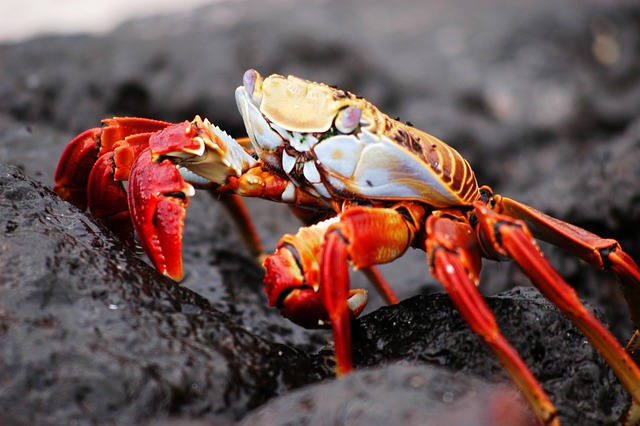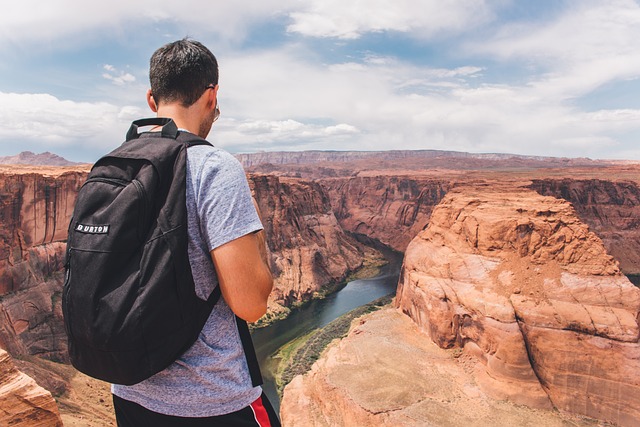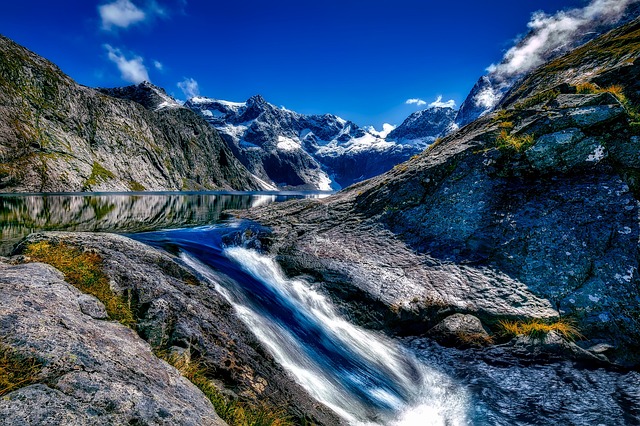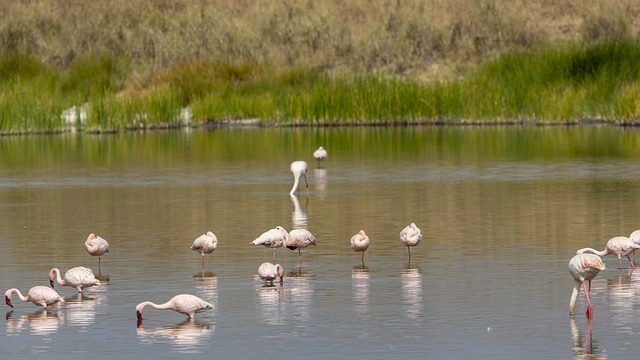Banff National Park: Where the Elk Wear Bow Ties
Nestled in the majestic Canadian Rockies, Banff National Park stands as a beacon of natural beauty and adventure. It was established in 1885, making it Canada’s first national park and a cornerstone of national heritage and environmental preservation. Year-round, visitors flock to this expansive protected area, spanning 6,641 square kilometers, drawn by its breathtaking landscapes, diverse wildlife, and the promise of outdoor activities that cater to both thrill-seekers and those in search of tranquility.

For those embarking on a journey to this natural wonderland, Banff is accessible from Calgary, just 150 kilometers away, with various transport options available to navigate the park’s vastness. Once inside the park boundaries, visitors are greeted by an array of adventures, from skiing pristine slopes in the winter to hiking, mountain biking, and canoeing in the warmer months. Not only a playground for the active, but Banff also offers the chance to witness some of Earth’s rawest geological features—soaring peaks, glacially fed lakes, and ancient forests—all carefully preserved for future generations to cherish.
Key Takeaways
- Banff National Park offers a mix of serenity and adventure amid the Canadian Rockies.
- It is accessible from major cities and offers diverse activities for all seasons.
- The park is a hub for conservation and a testament to Earth’s geological history.
Getting There and Around

Visitors might think that moose and bears have an easier time getting to Banff National Park than humans, but thankfully, that’s not the case. Those coming in from afar typically land at Calgary International Airport—the closest air link to the park. From there, one can either rent a car or hop on a shuttle faster than a squirrel on espresso.
The adventure begins with a scenic 90-minute drive from Calgary on the Trans-Canada Highway. This stretch of road offers views that may cause spontaneous outbursts of “oohs” and “aahs,” so drivers should be prepared for sudden exclamations.
| Mode of Transportation | Pros | Cons |
|---|---|---|
| Car | Freedom to roam like a wild elk. | None, unless traffic jams scare you. |
| Shuttle | They know the way, just sit back! | Fixed schedule like a bad haircut—can’t change it. |
| Train from Vancouver | Choo-Choo views galore. | Slower than a puzzled beaver. |
Once in the park, visitors swiftly learn that they don’t need a personal vehicle to explore. They can leave it behind and trust the efficient public transit or various shuttles to meander through the wilderness. Those feeling aquatic can make like a duck and get around by canoe, kayak, or SUP. Indeed, they can embark on epic quests up the Bow River and achieve tranquility away from the bustling Banff streets.
For the information gatherers, Banff & Lake Louise Tourism offers a trove of tips and tricks to master the art of navigating the park’s byways and waterways. So, whether by land or by lake, getting around Banff National Park is as delightful as spotting a grizzly from a safe distance – thrilling, but one need not run for the hills.
Adventures and Activities

Whether one is chasing thrills on ice or taking a serene bike ride under the summer sun, Banff National Park is brimming with activities to tickle any adventurer’s fancy.
Winter Sports
When winter cloaks Banff in its sparkly, icy gown, the frozen playground beckons. The park rolls out a snowy carpet for enthusiasts of skiing and cross-country skiing, transforming into a world-class destination for shredding powdery slopes. For adventurers preferring a lower velocity, winter walking on the crisp snow offers a more tranquil mode to relish the frosted landscapes.
- Skiing: Hit the slopes at one of the park’s ski resorts, known for their deep powder and breathtaking views.
- Cross-Country Skiing: Glide across the extensive network of trails offering peace, tranquility, and a solid workout.
Summer Trails
Once the snow melts and reveals Banff’s summer wardrobe, the hiking trails call to nature lovers and exercise buffs alike. Biking morphs into the go-to method for zipping around the park, with the wind in one’s hair and mountains on the horizon. Of course, one should always check the trail conditions report before venturing out, for nature can be as unpredictable as a squirrel at a picnic.
- Hiking: Wander through over 1,600 kilometers of maintained trails, suitable for a gentle stroll or a grueling trek.
- Biking: Pedal around serene lakes and meadows or tackle the more rugged mountain bike trails for that added adrenaline rush.
Water Activities
As if the land adventures weren’t enough, Banff’s waterways offer their own aquatic brand of excitement. Fishing aficionados can try their luck in the crystal-clear waters, hoping for a “reel” big catch (get it?). Recreational drones may capture one’s water triumphs, but pilots beware: regulations are as tight as a fish’s lips, so best check the rules before taking flight.
- Fishing: Cast a line amidst stunning scenery, but remember to obtain a proper fishing license.
- Recreational Drones: An exciting way to capture your watery escapades from above—just make sure to follow the park’s drone usage guidelines.
Natural Wonders

In Banff National Park, Mother Nature flaunts her stuff like it’s a catwalk featuring haute couture of the natural sort. One is sure to encounter a smorgasbord of critters strutting their fluff and an array of geological fashion statements that span millennia.
Flora and Fauna
Banff National Park isn’t just a pretty face with its stunning landscapes; it’s also brimming with a runway of wildlife celebrities. The park’s ecosystem boasts a cast featuring the majestic elk, the stealthy cougar, and the occasional paparazzi-shy wolverine. The bighorn sheep sport some seriously impressive headgear, while moose wander the montane catwalk, all amidst a backdrop of lush lodgepole pines that whisper secrets of the subalpine world. Visitors can expect to witness a variety of wildlife crossings, allowing for safe passage and an immersive experience in this UNESCO World Heritage Site.
-
Flora Spotlight:
- Montane: Home to grassy meadows and hearty trees like aspen and lodgepole pine.
- Subalpine: A dense forest bedecked with spruce and fir trees.
-
Fauna Catwalk Stars:
- Elk: The park’s posh herbivores with a penchant for posing.
- Bighorn Sheep: Head-turners with their curling horns.
- Cougar: The elusive apex predators with a mysterious aura.
Geology and Landscapes
Banff’s geological wardrobe is as varied as it is ancient. The Canadian Rockies are the park’s crown jewels, flaunting their rugged fashion sense that’s been in vogue for eons. Specks of glamour can be found in the serene Lake Louise and the photogenic Moraine Lake, both decked out in the most vibrant turquoise that puts top designers to shame. The Columbia Icefield is where ice meets might, and the historic Cave and Basin showcases thermal waters that have been the talk of the town since aeons past.
- Must-See Geological Runway Pieces:
- Sedimentary Rocks: Layers upon layers of Earth’s history book.
- Glaciers: The park’s cool contribution, chilling for thousands of years.
- Thermal Waters: Hot springs that have been hosting spa days since prehistoric times.
In the end, Banff National Park is a veritable feast for the senses, a place where the term ‘rugged beauty’ takes on new meaning, and where each visit feels like an exclusive backstage pass to Earth’s most breathtaking natural wonders show.
Park Information and Conservation

Nestled in the heart of the Canadian Rockies, Banff National Park isn’t just a pretty face with its mountains and meadows—it’s got brains too, with a sharp focus on conservation and visitor information that would make a librarian proud.
Fees and Passes
Annual Discovery Pass:
- Adult: $72.25
- Senior: $61.75
- One might say it’s a passport to adventure in Alberta’s slice of the Rocky Mountains.
Day Passes:
- Adult: $10.50
- These day passes make a cameo appearance for shorter visits and are just the ticket for fleeting frolics in the park.
Where to Purchase:
- Park passes can be snagged at the Banff Visitor Centre or at the legendarily helpful Lake Louise Visitor Centre.
Rules and Safety
Safety and Guidelines:
- Bears have the right of way, and so do the park’s safety rules. Visitors should stick to the script to ensure their time in the park isn’t a wildlife thriller they didn’t sign up for.
- The park management doesn’t monkey around when it comes to law enforcement action, so play by the book to keep the adventure comedy rolling.
Emergencies:
- For those “Oops!” moments, Banff has got your back with emergency services faster than you can say “Where’s the nearest ranger?”
Environmental Stewardship
Conservation Work:
- Engaging in scene-stealing conservation work, the park’s stewards are the unsung heroes behind the curtains, helping to keep this part of the Canadian Rocky Mountains ready for its close-up.
Indigenous Connections & Stewardship:
- Respect for indigenous heritage is more than a subplot in this park’s story, and visitors can expect to find threads of this narrative woven throughout their exploration of Banff’s trails and tributes, like the resonant Banff Legacy Trail.
Note: All fees are in Canadian dollars and may have one smiling all the way to the Rocky Mountains Park Act—not just a historic document, but a star in the park’s lineup, guiding its conservation and management since the early days of Banff’s rise to fame.







